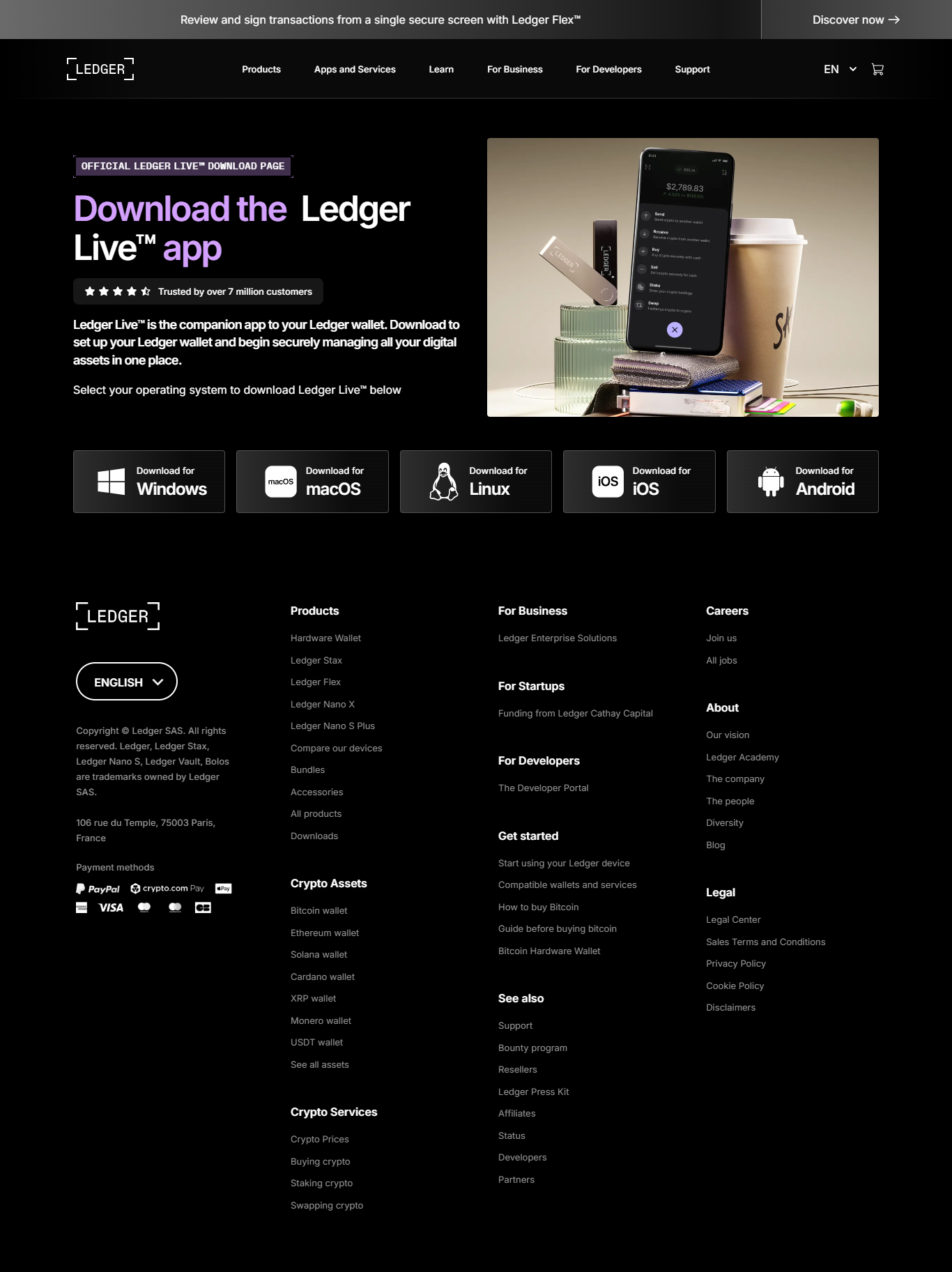Introduction
Ledger is a leading hardware wallet provider that offers secure storage for cryptocurrencies. Whether you're new to crypto or an experienced trader, setting up your Ledger device correctly is crucial for safeguarding your digital assets. This guide will walk you through the process of getting started with your Ledger wallet via Ledger.com/Start, covering setup, security features, and best practices.
What is Ledger?
Ledger is a hardware wallet that stores private keys offline, protecting your cryptocurrencies from online threats like hacking and phishing. Unlike software wallets, Ledger devices use secure elements to ensure maximum security.
Why Choose Ledger?
- Cold Storage Security: Private keys never leave the device.
- Multi-Currency Support: Supports Bitcoin, Ethereum, and 1,800+ other cryptocurrencies.
- User-Friendly Interface: Easy setup via Ledger Live software.
- Backup & Recovery: 24-word recovery phrase ensures you can restore your wallet if lost.
Unboxing Your Ledger Device
When you purchase a Ledger wallet (Nano S, Nano X, or Nano S Plus), the package includes:
- The Ledger hardware wallet
- USB cable (for Nano S/S Plus)
- Recovery sheet
- Keychain strap
- Getting started guide
Ensure your device is brand new and the packaging is sealed to avoid tampering.
Setting Up Your Ledger Wallet
Step 1: Visit Ledger.com/Start
This page provides official setup instructions. Avoid third-party guides to prevent scams.
Step 2: Download Ledger Live
- Available for Windows, macOS, Linux, iOS, and Android.
- Install the app and open it.
Step 3: Initialize Your Device
- Connect your Ledger via USB (or Bluetooth for Nano X).
- Choose "Set up as new device."
- Set a PIN code (4-8 digits). This protects your device from unauthorized access.
Step 4: Write Down Your Recovery Phrase
- Your device will generate a 24-word recovery phrase.
- Write it down manually (never digitally) and store it securely.
- Never share this phrase—it grants full access to your funds.
Step 5: Confirm Your Recovery Phrase
- The device will ask you to verify a few words to ensure you’ve recorded them correctly.
Step 6: Install Apps & Add Accounts
- Use Ledger Live to install apps for supported cryptocurrencies (e.g., Bitcoin, Ethereum).
- Add accounts for each cryptocurrency you want to manage.
Sending & Receiving Crypto
Receiving Funds
- Open Ledger Live and select the cryptocurrency.
- Click "Receive" and connect your Ledger.
- Verify the address on your device screen before confirming.
Sending Funds
- Select "Send" in Ledger Live.
- Enter the recipient’s address and amount.
- Confirm the transaction on your Ledger device.
Security Best Practices
- Never share your recovery phrase.
- Only buy from Ledger’s official store.
- Enable 2FA for Ledger Live.
- Firmware updates: Regularly update your device via Ledger Live.
- Beware of phishing scams: Ledger will never ask for your recovery phrase.
Why Ledger Stands Out
Ledger’s combination of hardware security, user-friendly software, and a robust ecosystem makes it a top choice for crypto investors. By keeping private keys offline and integrating with Ledger Live, it offers peace of mind in an industry prone to cyber threats. Starting your journey at Ledger.com/start ensures you’re following the official, secure process.
Conclusion
Setting up a Ledger hardware wallet is a straightforward yet critical step in securing your cryptocurrency. By following the steps outlined above and adhering to best practices, you can protect your assets from digital threats and manage your portfolio with confidence. Begin your journey today at Ledger.com/start and take control of your crypto future.
Made in Typedream
